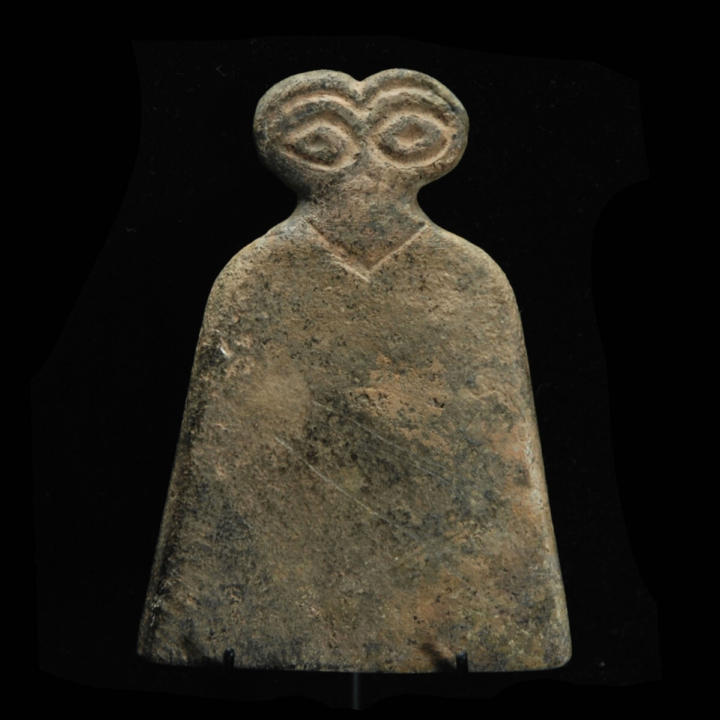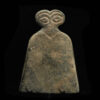Eye Idol of the Tell-Brak Type
Culture: Northern Syria
Period: 3500-3000 B.C.
Material: Steatite
Dimensions: 8.3 cm high
Price: Sold
Ref: 6423
Provenance: From the old German collection Professor Göring, prior to 1980. Thence with Antikenkabinett Gackstätter with the list number 01739. Last in a Munich collection. With the original certificate of the Antikenkabinett Gackstätter.
Condition: Intact
Description: Trapezoidal, flat eye idol made of black stone, probably steatite from the "Eye Temple" at Tell Brak. The shoulders are rounded and end in a short neck, which supports the broad head in the shape of a lying eight. The framed eyes are notched in the two circles of the eight. The pupils are drilled. The long eyebrows sit above it. The neck has a V-shaped notch, the back is flat. The so-called Eye Temple was discovered in the 1930s by British researcher Max Mallowan and interpreted as a temple. In doing so, he found hundreds of anthropomorphic figures. The figure of the eye idols is interpreted by Mallowan as the Sumerian fertility goddess Inanna, who is supposedly worshiped in the Eye Temple. Another interpretation is that the wide open eyes are a symbol of the worshipers' awareness of the gods. Because the idols are individually designed, from the very simplest of bodies to zigzag decor that could be interpreted as stylized clothing, it is possible that they represent the worshipers themselves. From today's art historical point of view, the degree of abstraction seems downright modern. Mounted.




